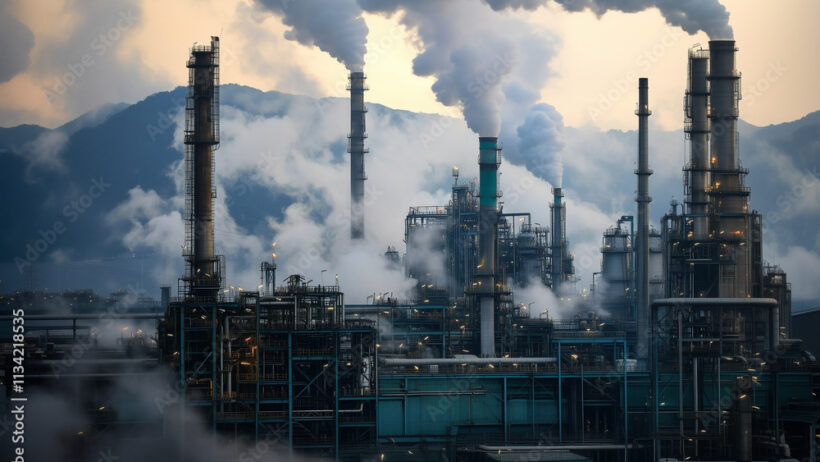The omnipresent specter of vehicle pollution looms over urban landscapes, suffocating the very air we breathe and exacerbating the cataclysm of global warming. This insidious foe infiltrates our daily lives, disguised as convenience, yet its repercussions are monumental. As we navigate through cities, unaware of the underlying threat, we become unwitting accomplices to this environmental malaise. The gargantuan machines that ferry us across distances emit a toxic cocktail that warms our planet, raising critical inquiries about our collective journey toward sustainability.
At the heart of the issue lies the emission of greenhouse gases, particularly carbon dioxide (CO2), a byproduct of fossil fuel combustion in vehicles. Each engine sighs as it exhales, contributing countless tons of CO2 into the atmosphere. Put simply, the more we drive, the warmer the world becomes. This relationship resembles a devil’s handshake: a seemingly innocent act of travel wrapped in convenience belies the casualties unfolding in the atmosphere. It is imperative to disentangle our dependency from these mechanical companions to mitigate their environmental impact.
This phenomenon is not an isolated incident; it adheres to the principle of systemic interdependence. The combustion engines that power our vehicles operate on gasoline, diesel, or natural gas; resources extracted, refined, and combusted largely from the Earth’s reserves. This extraction process is intrinsically linked to deforestation, habitat destruction, and displacement of communities—all ecological repercussions that amplify climate change. Consequently, a vicious cycle ensues: as we traverse the pavement, we extract the Earth’s bounty, only to poison the air we inhabit.
The figures are staggering. According to recent estimates, transportation is responsible for nearly 29% of greenhouse gas emissions in the United States alone. This data illustrates a precarious reality where vehicles represent the second-largest source of emissions. The scale of this pollution dwarfs many other sectors, breeding urgency for change. Amidst growing concerns for public health and the climate, the responsibility weighs heavily on us, society sporting the attributes of a neophyte—unaware of the looming catastrophe unfolding in slow motion.
Notably, the effects of vehicular emissions reverberate through time and space. The notion of ‘gassed out’ encapsulates how our atmosphere suffocates under relentless pollution. As greenhouse gas concentrations rise, the Earth’s temperature fluctuates, leading to more frequent and devastating weather phenomena, including extreme heatwaves, floods, and hurricanes. The altered climate does not merely rearrange weather patterns; it endangers biodiversity, disrupts food security, and provokes humanitarian crises—all consequences stemming from our inability to sever the bond with fossil fuel consumption.
Moreover, the Mediterranean and Arctic regions have witnessed scalding temperatures attributed to the overall warming trend. In effect, global warming has exacerbated the melting of polar ice, leading to rising sea levels—a consequence that threatens coastal communities around the world. Thus, the repercussions of vehicle pollution transcend invisible boundaries, initiating a cascade of environmental disturbances that unravels the very fabric of our existence.
The appeal of electric vehicles (EVs) emerges as a beacon of hope amidst this tempestuous climate of despair. These vessels of change are not rooted in fossil fuels but draw power from cleaner sources, reducing our reliance on traditional combustion engines. By electrifying our commutes, we can dismantle the chain reaction of greenhouse gas emissions. However, the transition to EVs must be pursued holistically, integrating renewable energy technologies to power charging stations and eliminate reliance on fossil fuel-derived electricity.
There lies an undeniable urgency to cultivate a culture of conscientious transportation. Advancements in public transit, cycling infrastructures, and car-sharing services should be embraced as compounding strategies to lessen vehicular reliance. Imagine cities where bicycles navigate through vibrant green corridors, intertwining nature and transportation to harmonize urban existence. Here, the automotive emblem of progress morphs into a nostalgic relic, overtaken by a renaissance of sustainable mobility.
Public policy can catalyze this transformation. Substantial investments in public transport and infrastructure designed for alternative modes of transit can galvanize individuals to choose smarter travel options. Imposing stricter fuel-efficiency standards on manufacturers and providing incentives for sustainable travel demonstrate tangible steps toward reducing vehicular emissions. Such measures create an ecological domino effect—a systemic reshaping of priorities aligned with planetary well-being.
As climate catastrophes intensify, awareness becomes paramount. Federating community initiatives to cultivate advocacy for greener practices can dismantle the standard norms that have led to excessive vehicular pollution. Together, society can partake in collective action: carpooling for communal benefit, attending local workshops on sustainability, or supporting local initiatives aimed at preserving natural ecosystems and encouraging eco-friendly ordinances.
In conclusion, the journey toward a sustainable future requires navigating through the tangled web of vehicle pollution and its role in precipitating climate change. Embracing alternative transportation modes forms the crux of this endeavor, entwined with collective efforts that challenge established norms. Our collective voice can rise against the gassed-out air, echoing a sentiment that champions planetary health, ultimately catalyzing a transformation spiraling toward a greener and more sustainable tomorrow. The time to act is not tomorrow, but today—before the fumes envelop us into oblivion.






